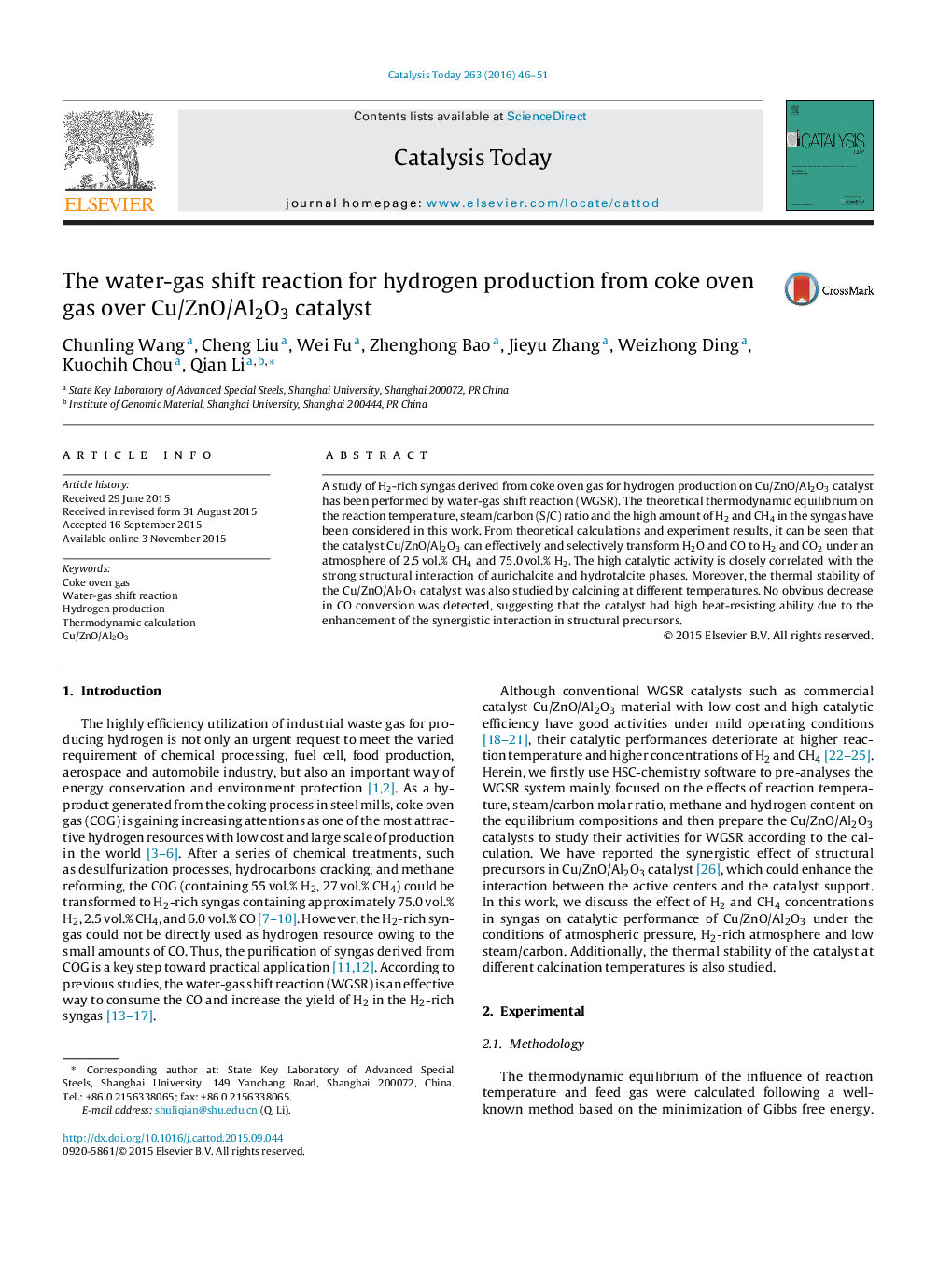| کد مقاله | کد نشریه | سال انتشار | مقاله انگلیسی | نسخه تمام متن |
|---|---|---|---|---|
| 53401 | 46968 | 2016 | 6 صفحه PDF | دانلود رایگان |

• The application of Cu/ZnO/Al2O3 catalysts to produce hydrogen from H2-rich syngas derived from coke oven gas.
• The effect of H2 and CH4 concentrations in H2-rich syngas on catalytic performance.
• The thermal stability of the catalyst at different calcination temperatures.
A study of H2-rich syngas derived from coke oven gas for hydrogen production on Cu/ZnO/Al2O3 catalyst has been performed by water-gas shift reaction (WGSR). The theoretical thermodynamic equilibrium on the reaction temperature, steam/carbon (S/C) ratio and the high amount of H2 and CH4 in the syngas have been considered in this work. From theoretical calculations and experiment results, it can be seen that the catalyst Cu/ZnO/Al2O3 can effectively and selectively transform H2O and CO to H2 and CO2 under an atmosphere of 2.5 vol.% CH4 and 75.0 vol.% H2. The high catalytic activity is closely correlated with the strong structural interaction of aurichalcite and hydrotalcite phases. Moreover, the thermal stability of the Cu/ZnO/Al2O3 catalyst was also studied by calcining at different temperatures. No obvious decrease in CO conversion was detected, suggesting that the catalyst had high heat-resisting ability due to the enhancement of the synergistic interaction in structural precursors.
A study of H2-rich syngas derived from coke oven gas for hydrogen production on Cu/ZnO/Al2O3 catalyst has been performed by water-gas shift reaction (WGSR). It is highly important to investigate the effect of H2 concentration on the performance of our as-prepared WGSR catalyst. From theoretical calculations and experiment results, the changes in CO conversion from theoretical calculations at each reacted temperature are unobvious at different H2 concentrations in feed gas, while the experimental results indicate the visible declines in CO conversions with the increase of H2 concentration in the feed gas.Figure optionsDownload high-quality image (180 K)Download as PowerPoint slide
Journal: Catalysis Today - Volume 263, 1 April 2016, Pages 46–51